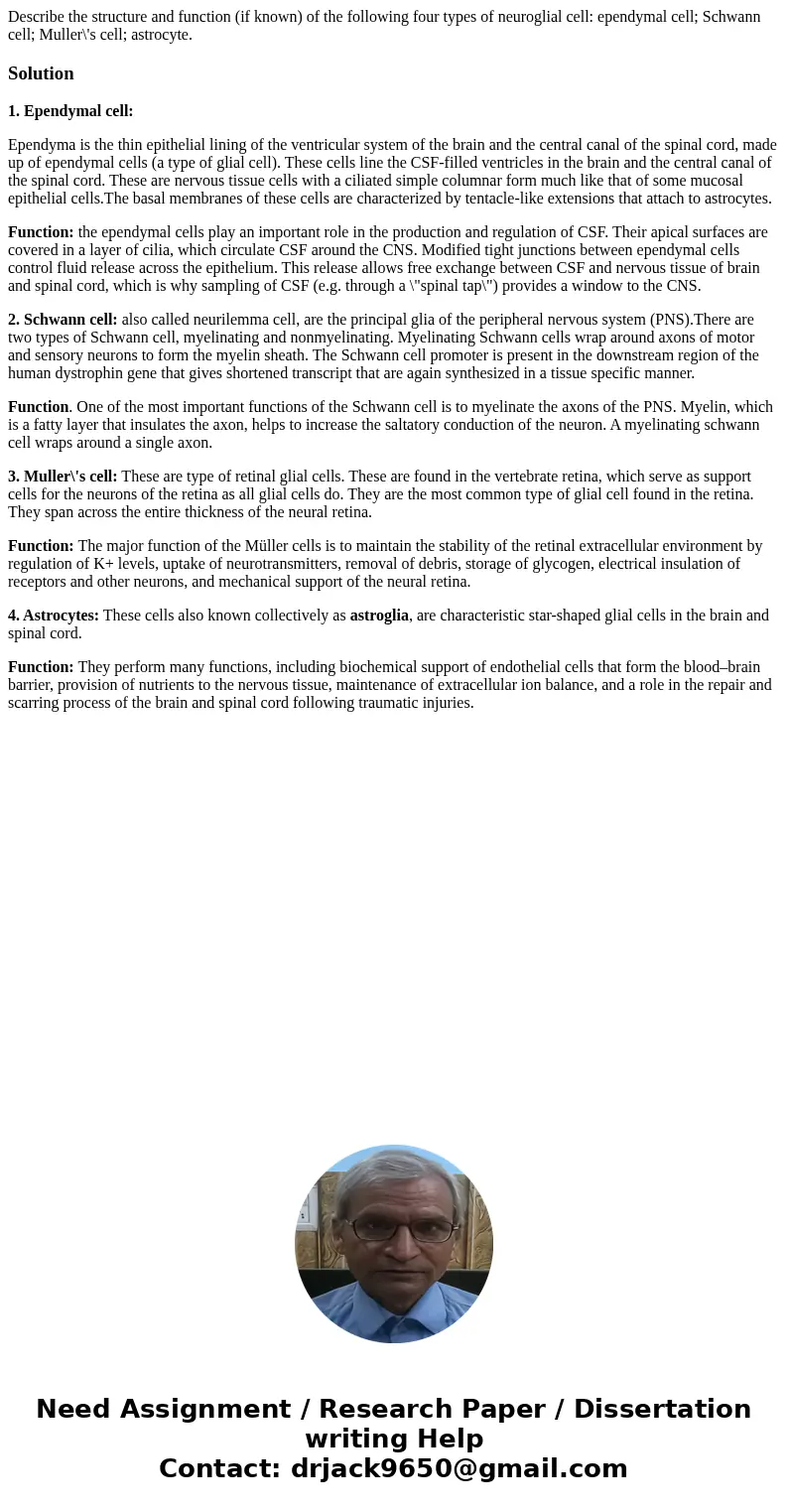Describe the structure and function if known of the followin
Describe the structure and function (if known) of the following four types of neuroglial cell: ependymal cell; Schwann cell; Muller\'s cell; astrocyte.
Solution
1. Ependymal cell:
Ependyma is the thin epithelial lining of the ventricular system of the brain and the central canal of the spinal cord, made up of ependymal cells (a type of glial cell). These cells line the CSF-filled ventricles in the brain and the central canal of the spinal cord. These are nervous tissue cells with a ciliated simple columnar form much like that of some mucosal epithelial cells.The basal membranes of these cells are characterized by tentacle-like extensions that attach to astrocytes.
Function: the ependymal cells play an important role in the production and regulation of CSF. Their apical surfaces are covered in a layer of cilia, which circulate CSF around the CNS. Modified tight junctions between ependymal cells control fluid release across the epithelium. This release allows free exchange between CSF and nervous tissue of brain and spinal cord, which is why sampling of CSF (e.g. through a \"spinal tap\") provides a window to the CNS.
2. Schwann cell: also called neurilemma cell, are the principal glia of the peripheral nervous system (PNS).There are two types of Schwann cell, myelinating and nonmyelinating. Myelinating Schwann cells wrap around axons of motor and sensory neurons to form the myelin sheath. The Schwann cell promoter is present in the downstream region of the human dystrophin gene that gives shortened transcript that are again synthesized in a tissue specific manner.
Function. One of the most important functions of the Schwann cell is to myelinate the axons of the PNS. Myelin, which is a fatty layer that insulates the axon, helps to increase the saltatory conduction of the neuron. A myelinating schwann cell wraps around a single axon.
3. Muller\'s cell: These are type of retinal glial cells. These are found in the vertebrate retina, which serve as support cells for the neurons of the retina as all glial cells do. They are the most common type of glial cell found in the retina. They span across the entire thickness of the neural retina.
Function: The major function of the Müller cells is to maintain the stability of the retinal extracellular environment by regulation of K+ levels, uptake of neurotransmitters, removal of debris, storage of glycogen, electrical insulation of receptors and other neurons, and mechanical support of the neural retina.
4. Astrocytes: These cells also known collectively as astroglia, are characteristic star-shaped glial cells in the brain and spinal cord.
Function: They perform many functions, including biochemical support of endothelial cells that form the blood–brain barrier, provision of nutrients to the nervous tissue, maintenance of extracellular ion balance, and a role in the repair and scarring process of the brain and spinal cord following traumatic injuries.

 Homework Sourse
Homework Sourse